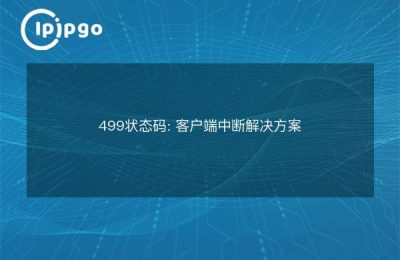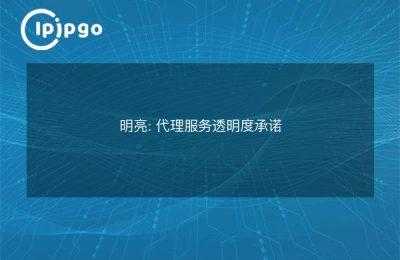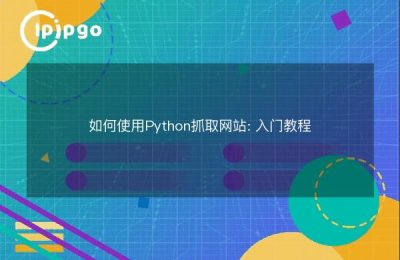
Hello everyone, I am Lao Zhang, an architect in the field of proxy IP. Today I'm sharing with you a set of battle-provenDesign of 10 Million Agent Pool Architecture, combined with Redis and Scrapy framework, to teach you how to implement a highly stable distributed crawler system with low cost. The proxy service we use isipipgo(a professional service provider of global proxy IP), its residential IP resources cover more than 240 countries and its dynamic IP pool reaches 90 million+, which is especially suitable for scenarios requiring large-scale data collection.
I. Why do we need a 10 million agent pool?
Anyone who has done crawling knows that there are three major fatalities of stand-alone crawlers:IP blocked, slow speed, data lossI've been using traditional methods to manage proxy IPs. I used to manage proxy IPs the traditional way, and it ended up taking 3 hours a day to manually switch IPs, and often caused data outages due to IP failures.
Take a real case: an e-commerce company needs to monitor the price data of 50 platforms around the world, with more than 2 million requests in a single day. When using the ordinary proxy pool, the 30% request failed due to IP failure, and it was changed to use theipipgo Dynamic Residential IPWhen paired with our architecture, the failure rate drops below 0.5%.
II. Architecture core design (Redis+Scrapy version)
The core of this architecture isthree-layer split design, using Redis for the brain, Scrapy for the arms and legs, and proxy pools for the blood:
| assemblies | corresponds English -ity, -ism, -ization | Recommended Configurations |
|---|---|---|
| Redis server | Store queue of URLs to be crawled, crawled data, proxy IP pools | Cluster deployment + Sentinel mode |
| Scrapy crawler nodes | Distributed execution of crawling tasks | Docker Containerized Deployment |
| ipipgo proxy interface | Get available proxy IPs in real time | API Dynamic Extraction + Automatic Authentication |
Here's one.unique skill: Setting up per-proxy IPs in RedisDual TTLFor example, ipipgo's dynamic IP is valid for 5 minutes. For example, ipipgo's dynamic IP is valid for 5 minutes, and we set the expiration time in Redis to 4 minutes and 30 seconds to change the IP in advance to avoid interrupting the request.
C. Efficient Management Strategies for Proxy IP
The key to managing a pool of 10 million agents is to do it rightthree things::
- hierarchical storage: Categorize ipipgo's IPs by response rateFast (<200ms),Medium (200-500ms),Slow (>500ms)Third gear, prioritizing the use of fast IPs
- Heartbeat Detection: Test IP availability with HEAD requests every 2 minutes, failing IPs are automatically moved out of the way
- Intelligent Switching: Automatically switch country/region nodes when encountering blocking of target websites (ipipgo supports precise positioning by country)
Here's one to shareanti-blocking secret: Add this code to Scrapy's Downloader Middleware to realize the request header and the IP address.dynamic binding::
def process_request(self, request, spider): proxy = redis_client.rpop('ipipgo_proxy_pool') request.meta['proxy'] = f "http://{proxy}" request .headers.update({ 'User-Agent': get_random_ua(), # Randomize from UA pool 'X-Proxy-Sign': generate_md5(proxy) # Generate IP Signature })Four, distributed crawler combat steps
Follow my lead.five-step construction::
- Apply for ipipgo trial key: Get a free 1GB traffic test
- Configuring Scrapy-Redis::
SCHEDULER = "scrapy_redis.scheduler.Scheduler" DUPEFILTER_CLASS = "scrapy_redis.dupefilter.RFPDupeFilter" REDIS_URL = 'redis://:password@ 10.0.0.1:6379' - Write IP maintenance scripts: pull the latest IP list from the ipipgo API at regular intervals
- Deploying Watchdog: Monitor core metrics such as request success rate, IP reuse rate, etc. with Grafana
- stress test: Gradually increase the number of concurrency from 100 to 5000 and observe the system stability.
V. Frequently Asked Questions QA
Q: Why do I have to use a residential IP? Can't I use a data center IP?
A: The request characteristics of residential IPs are closer to real users. Residential IPs like ipipgo come from real home broadband, and the recognition rate of the anti-climbing system is lower than data center IPs by more than 80%.
Q: What should I do if the proxy IP suddenly fails in large numbers?
A:Check two places: 1) whether the balance and traffic of ipipgo backend are sufficient 2) whether the TTL setting of Redis is less than the proxy validity period. Suggested configurationfusion mechanism: Automatically pauses the crawler and sends an alert when the available IP falls below 10%.
Q: How can I reduce agency costs?
A: Use the good ipipgo'shybrid billing model: Dynamic IP for high-frequency requests (pay-per-volume), static IP for low-frequency precision needs (monthly subscription is more cost-effective).
The last advice to everyone: never build your own proxy server! Our team once spent 2 million dollars to build its own server room, the result is that the maintenance cost is 3 times more expensive than buying ipipgo service directly. Professional things to professional people, in order to focus on the core of the business.








